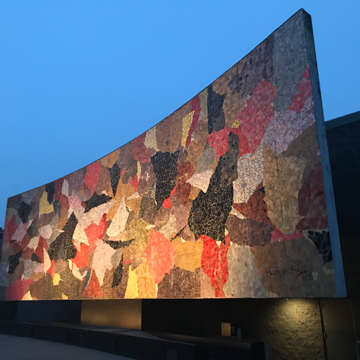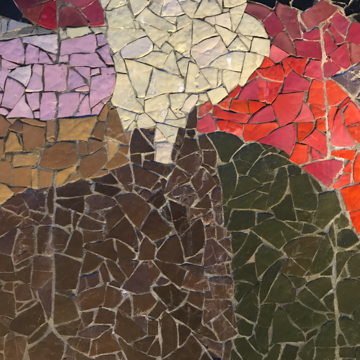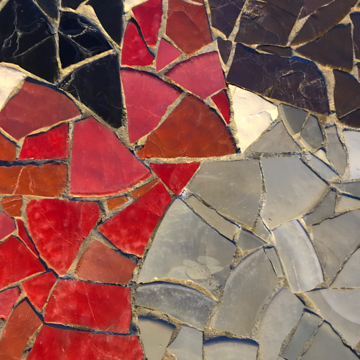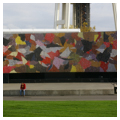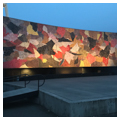The Horiuchi Mural is a public work of art commissioned by fair organizers for the 1962 Century 21 Exposition in Seattle. The design was conceived by the Northwest artist Paul Horiuchi and fabricated under the direction of Italian craftsman Olivo Santagostino. Made up of 54 pieces of Venetian glass in over 160 shades of red, yellow, pink, brown, and green, the “mural,” which is actually a mosaic, was mounted on a curved panel measuring 17 by 60 feet. The largest artwork at the fair, it rested on a simple plinth above a crescent-shaped base designed by Paul Thiry, the fair’s principal architect.
Horiuchi was a leading Northwest artist known for his abstract, torn-paper collages. Born and raised in Japan, he moved to the United States in 1920, but he only became a professional artist in his late forties. His works from the mid-1950s and later reflect the influence of Abstract Expressionism, which the artist blended with shikishi, a decorative form of collage used in Japan since the 1100s. Both of these approaches can be perceived in Horiuchi’s nonrepresentational design of free-flowing, organic shapes and bright colors for the fair mosaic, whose beginnings as a collage of multicolored torn paper translated into the large-scale mosaic and suggested “soft, wispy layerings of paper” appearing to blow in the wind. The colorful composition also was apparently meant to express the dynamism of the world’s fair—and the beauty of the Pacific Northwest. It was Horiuchi’s first and only public commission.
The mural’s original location was part of Friendship Mall, an open plaza within the “World of Domestic Commerce and Industry” themed district. On a functional level, the mural now serves as an acoustic buffer for the performances held in the open area to its west, which is called the Mural Amphitheater in honor of Horiuchi’s creation.














